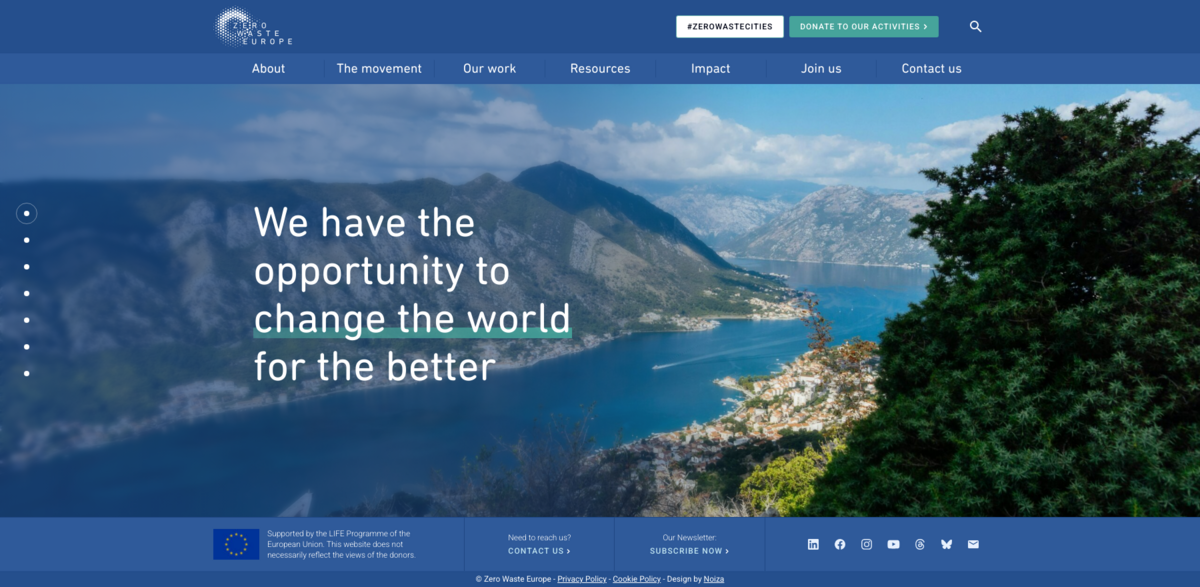What is the Zero Waste Europe Project?
Zero Waste Europe is a movement dedicated to conserving all resources through responsible production, consumption, reuse, and recovery of products, packaging, and materials — all without burning and with zero discharges to land, water, or air that could harm the environment or human health. This definition, adopted by the Zero Waste International Alliance, captures the essence of what zero waste truly means. Waste isn’t just trash; it’s a symptom of a deeper problem affecting humanity. Zero waste is a philosophy that aims to tackle the root causes of waste altogether.
Main Benefits of Zero Waste Europe
Here’s why this project matters:
- Our planet naturally followed zero waste principles for thousands of years — until the industrial era changed everything.
- Historically, discarded materials were reused as inputs for other processes, keeping their value in a circular way, just like nature intended.
- Zero Waste Europe pushes for a shift from managing waste to managing Earth’s valuable resources properly.
- It’s about building resilience and natural capital for future generations, not just reducing environmental damage.
- The project moves society beyond the question of “if” zero waste is achievable, focusing instead on “how” and “when” it will be embraced by policymakers and influencers.
Understanding Zero Waste Philosophy
Zero waste isn’t just about throwing less away. It’s a mindset that challenges the way society produces and consumes. The goal? To create ecosystemic relationships that preserve the value and energy embedded in resources. This approach allows civilization to thrive without sacrificing the environment. It’s a call to rethink the entire system — to design products and processes that mimic nature’s circular flow, where nothing is wasted.
The Circular Economy Connection
The circular economy is the engine driving zero waste societies. It’s an economic model focused on sharing, leasing, reusing, repairing, refurbishing, and recycling materials and products for as long as possible. This model also tackles hazardous chemicals throughout the value chain, ensuring a toxic-free environment. In practice, it means designing safe, sustainable products and adopting demand-side measures that minimize waste and reduce the need for extracting new materials. When products reach the end of their life, their materials stay in the economy, creating value again and again — without environmental destruction.
Why Zero Waste Matters Now More Than Ever
In the 20th century, waste management aimed to minimize immediate environmental harm by collecting and disposing of waste as safely as possible. But that’s just not enough anymore. Zero Waste Europe brings this into the 21st century by shifting focus from waste management to resource management. It’s about seeing waste as a resource, not a problem. The urgency is real — the planet can’t keep absorbing damage without consequences. Zero waste is no longer a distant dream; it’s a necessary goal for a sustainable future.
Project Impact and Sustainable Development Goals (SDGs)
- SDG 11: Sustainable Cities and Communities — promoting zero waste cities.
- SDG 12: Responsible Consumption and Production — encouraging circular economy practices.
- SDG 13: Climate Action — reducing emissions through resource efficiency.
- SDG 14: Life Below Water — preventing pollution and protecting marine ecosystems.
- SDG 15: Life on Land — conserving terrestrial ecosystems by reducing waste and pollution.
Looking Ahead: The Future of Zero Waste Europe
Zero Waste Europe isn’t just about avoiding a dystopian future — it’s about creating a thriving, resilient society that respects planetary boundaries. The project encourages policymakers, businesses, and citizens to embrace zero waste as a legitimate and desirable goal. The journey involves redesigning systems, fostering innovation, and building a culture where waste is a thing of the past. The future? It’s circular, sustainable, and full of potential.





















